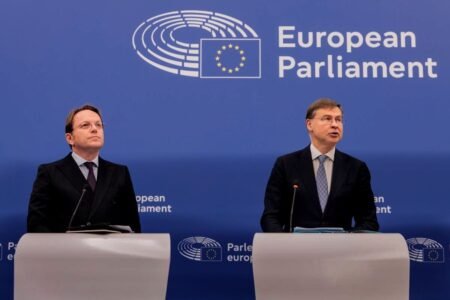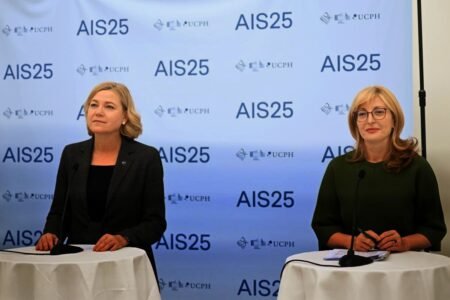The European Commission on 23 November opened the Innovation Fund’s 2023 call for proposals with a record budget of EUR 4 billion to support the deployment of innovative decarbonisation technologies.
Advertisement
1. What projects are eligible for the Innovation Fund 2023 Call?
This call for projects is divided into five different categories: large (CAPEX above 100 million), medium (CAPEX between 20 million and 100 million) and small (CAPEX between 2.5 million and 20 million) decarbonisation projects; cleantech manufacturing; and pilot projects.
Cleantech manufacturing projects can include manufacturing of components for renewable energy, energy storage, heat pumps and hydrogen production. Pilot projects can include highly innovative projects focused on deep decarbonisation of sectors listed in Annex I and III to the EU ETS Directive 2003/87, including environmentally safe carbon capture and utilisation, and products substituting carbon-intensive ones produced in sectors also listed in Annex I to the Directive.
Projects located in the European Economic Area (EEA) are eligible to apply. Following the recent revision of the EU Emissions Trading System (EU ETS) Directive, the call is now also open to the maritime, road transport and buildings sectors under the general decarbonisation topic, in addition to technologies in energy-intensive industries (including aviation), carbon capture use and storage, renewable energy and energy storage. The expansion to the road transport and buildings sector aims to support innovation in low- and zero-carbon technologies and processes that concern the consumption of fuels in buildings and road transport, including collective forms of transportation such as public transport and coach services.
With the expansion of the ETS to the maritime sector, the Innovation Fund can now support breakthrough innovative technologies aimed at decarbonising this sector. This can include energy efficiency, sustainable alternative fuels, electrification, as well as zero-emission propulsion technologies, such as wind technologies. It can also cover innovative infrastructure in the maritime sector, notably for EU container transhipment ports. Projects can address the full climate impacts, including black carbon emissions.
2. How does the Innovation Fund 2023 Call contribute to the European Green Deal and the REPowerEU objectives?
The Innovation Fund uses revenues generated by the EU Emissions Trading System to invest in Europe’s green transition. This is at the heart of Europe’s climate policies, driving down emissions in a fair and economically efficient way, and stimulating the transition to clean energy, technologies and industries. With the revised Emissions Trading System putting a price on carbon in further sectors, more funding is available for the transition.
The Innovation Fund is fully aligned with the priorities of the Net-Zero Industry Act, providing funding for a low- and net-zero-carbon economy, helping to bridge the cost gap between conventional and clean energy industries and accelerating the demonstration and deployment of innovative low-carbon solutions in Europe. It is one of the key tools of the European Green Deal Industrial Plan and a major financing mechanism to promote investments in clean technologies.
The “Cleantech manufacturing” category within the call is aimed at manufacturing components for renewable energy, energy storage, heat pumps and hydrogen production, with an increased budget of 1.4 billion (compared to 700 million in the previous Innovation Fund call). The Innovation Fund projects previously awarded or pre-selected for grants are already sufficient to meet 17% of the production capacity of photovoltaic panels foreseen under NZIA by 2030, 11% of the electrolyser manufacturing, and 7% of the battery manufacturing. Innovation Fund projects already awarded or pre-selected for grants could cover 21% of NZIA’s CO2 storage target.
The Strategic Technologies for Europe Platform (STEP) will also contribute to the Innovation Fund’s alignment with NZIA by allocating an additional 5 billion to the Fund. This additional funding aims to support the development and manufacturing of critical technologies in the fields of digital and deep tech, cleantech, and biotech, fostering innovation and strengthening European competitiveness in line with NZIA objectives.
The Innovation Fund also supports the REPowerEU Plan to phase out Europe’s dependency on Russian fossil fuels. The “cleantech manufacturing” projects can include the production of innovative components needed for renewable energy, electrolysers, heat pumps and energy storage, and hydrogen production, all of which will help Europe to further reduce its dependency on Russian fossil fuel imports.
3. Is there a pre-allocation of funding per Member State or other measures aiming at geographical balance for this Call?
The Innovation Fund allocates its resources through competitive calls for proposals, applying the main award criteria described in the recently adopted Delegated Regulation for the operation of the Innovation Fund, the Financing Decision and previous call texts. These criteria are: the degree of innovation, greenhouse gas emission avoidance potential, project maturity, replicability and cost efficiency. The projects are selected based on the highest scores across all five award criteria. The projects that score the highest in the evaluation process in each category are selected within the available budget, irrespective of the sector or location.
The Innovation Fund’s legal basis allows for the application of specific criteria to ensure geographical balance. However, as projects supported under the Innovation Fund are currently located in 22 Member States and their geographical distribution is becoming increasingly widespread, applying specific geographic criteria is not deemed necessary at this stage.
To stimulate this broader geographical balance, there are already four major initiatives in place to support Member States in their efforts to develop a high-quality national innovative project pipeline:
- The revision of the EU ETS Directive introduced ‘Technical Assistance for Member States with low effective participation’ aiming to increase the overall quality of the Innovation Fund applications. This assistance will start in 2024.
- The Technical Support Instrument (TSI)
- Training sessions for Member States National Contact Points, outreach and communication.
- The new Contribution Agreement with the European Investment Bank covers project development assistance from 2024 onwards and will include geographical and sectoral balance Key Performance Indicators (KPIs).
4. When can these innovative projects be expected to reach the market?
Project promoters have until 9 April 2024, 17:00 (CET), to apply via the EU Funding and Tenders Portal. Applicants will be informed about evaluation results in the fourth quarter of 2024. Successful applicants will sign grant agreements in the first quarter of 2025.
The selected projects must reach financial close within four years after the grant signature and operate for a minimum of five years after entry into operation (except for small-scale and pilot projects which have a three-year minimum operation period). Pilot and cleantech manufacturing projects are encouraged to achieve financial close within two years and entry into operation within four years after grant agreement signature.
Source: European Commission







